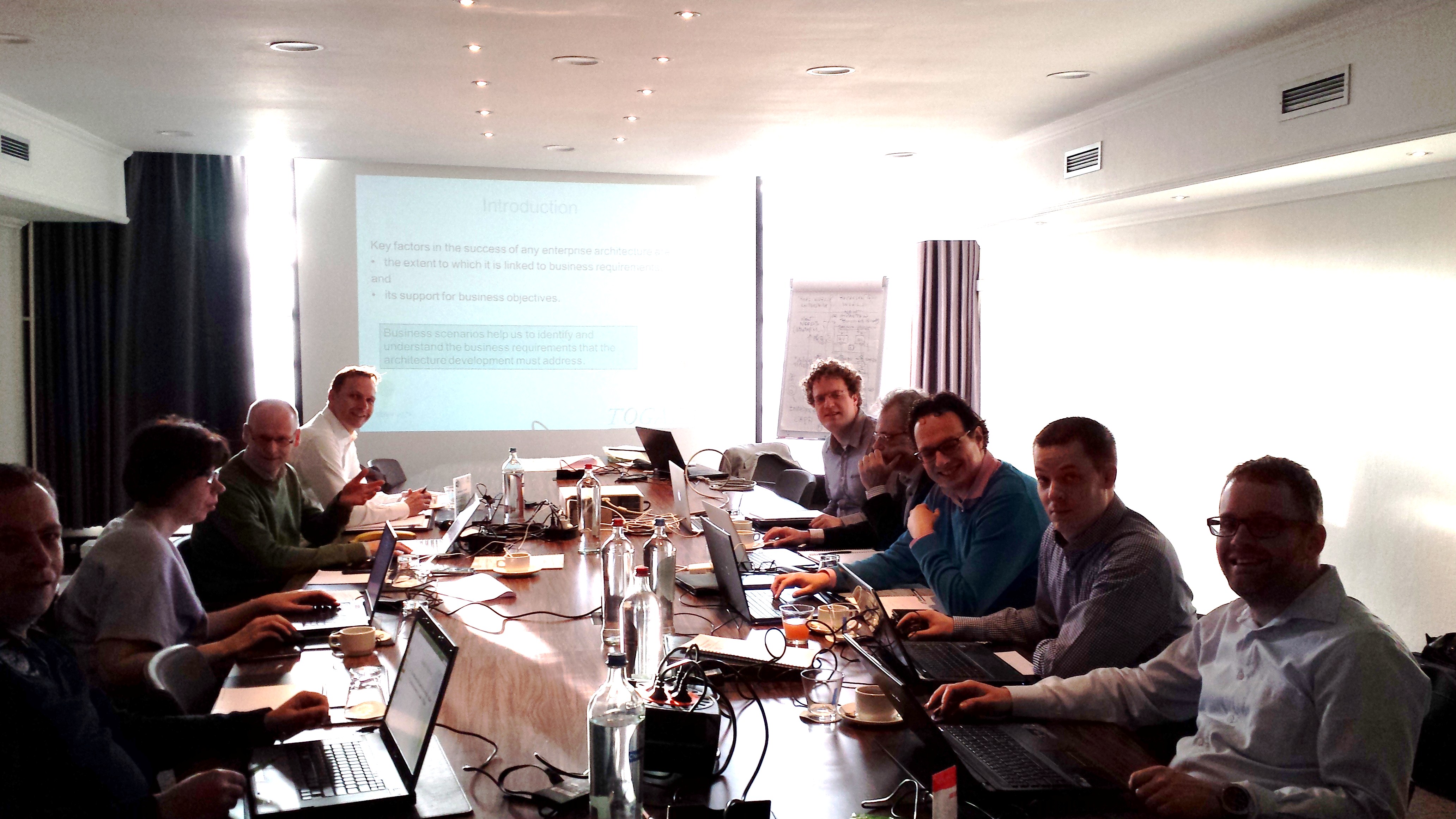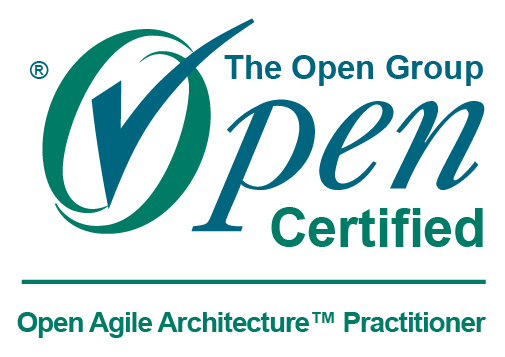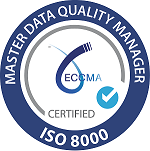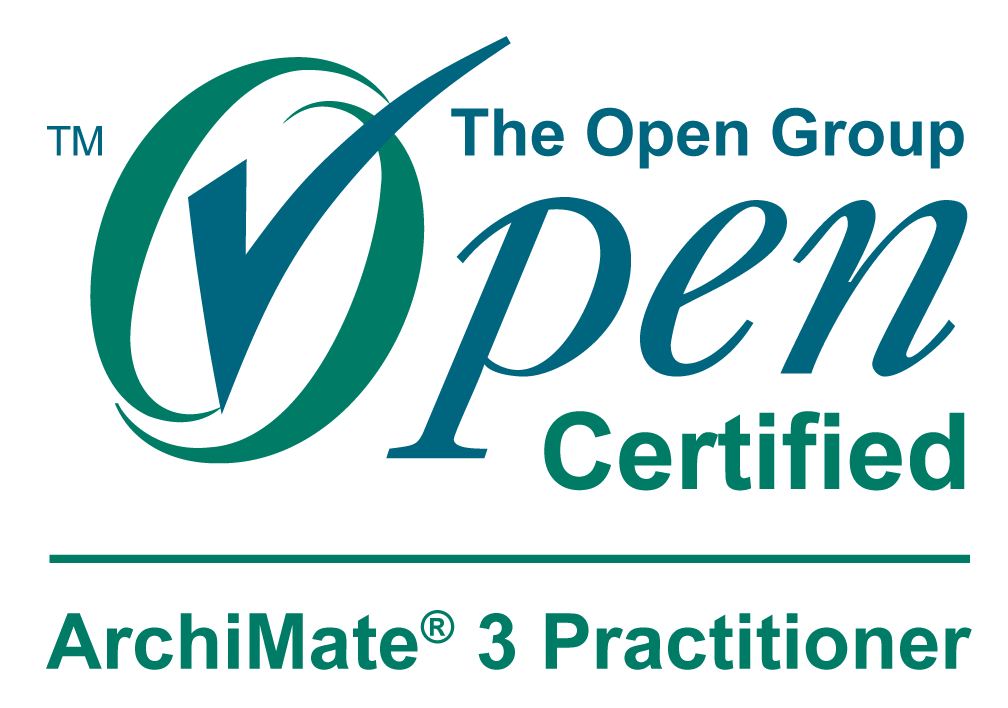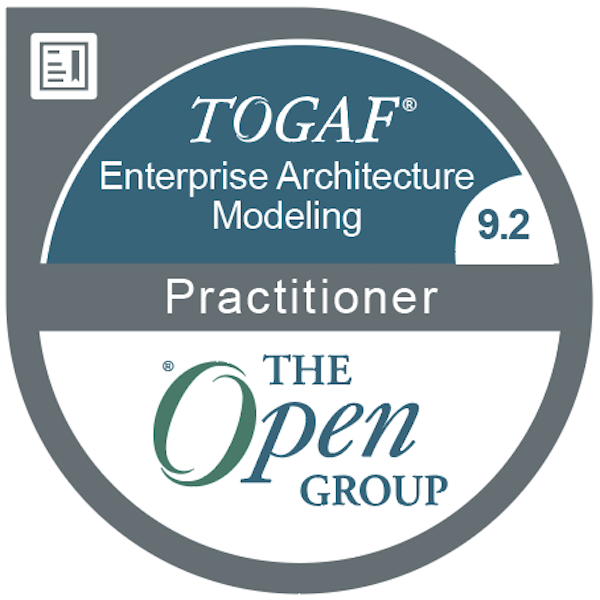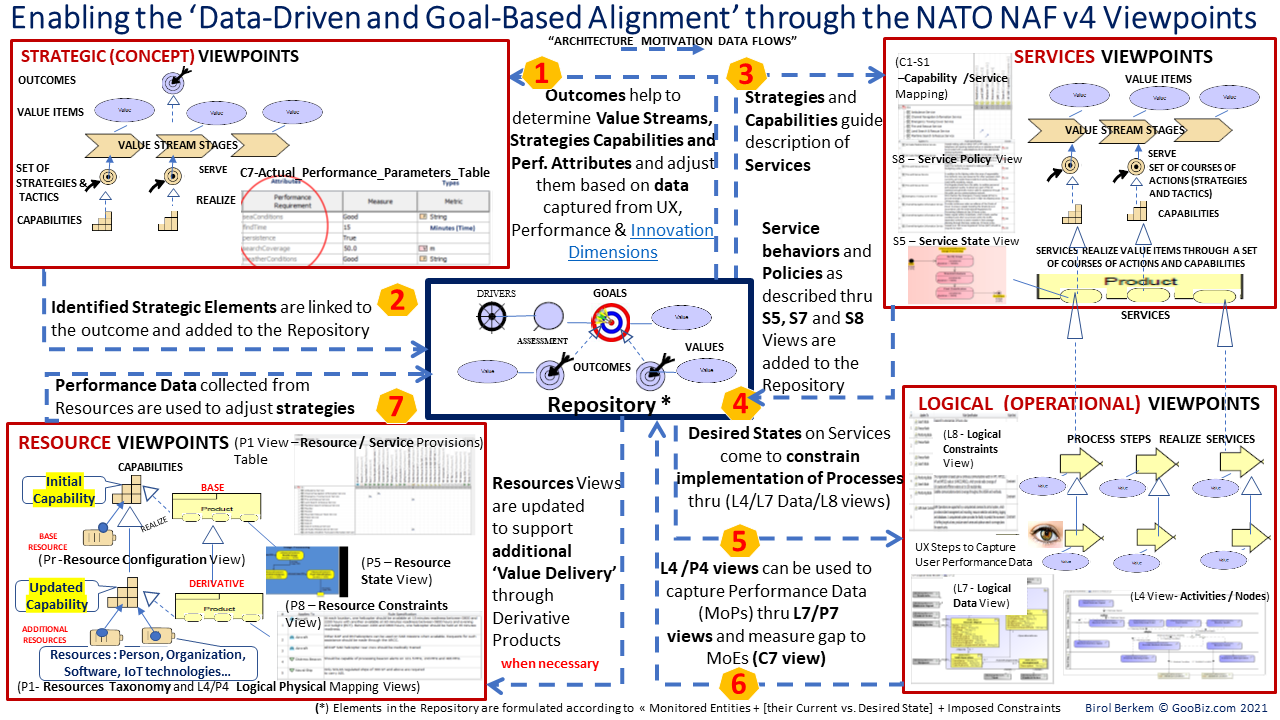NATO NAF v4 - Aligning Model-Based System Architectures to 'Desired Effects'
Aligning Physical Resources (human and no-human systems) with the Enterprise Vision, Strategies, Values and Capabilities
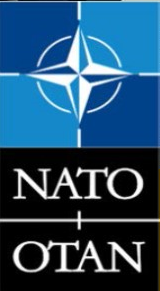
![]() 'NATO NAF v4' is a recent Architecture Framework standard designed to develop and describe architectures for both military and business sides.
'NATO NAF v4' is a recent Architecture Framework standard designed to develop and describe architectures for both military and business sides.
This new version of the NAF is based on the OMG's UAF v1.2 Domain Meta-Model (DMM) and the Open Group's ArchiMate 3 MetaModels.
We particularly emphasize below on the alignment of Organization Capabilities, Services, Operations, Personnel and Physical System Resources to the Vision, Goals and Strategies as such an alignment becomes facilitated by the new NAF v4 Grid of viewpoints depicted in figure 1 below.
Indeed, NAF v4 brings a well-defined 'grid structure' to align viewpoints from Enterprises Vision, Strategies / Capabilities until Physical Resources.
While its Subjects of Concern (rows of the grid) focus on different domains from Vision and Capabilities to the Physical Systems, its Aspects of Concern (columns of the grid) emphasize on Structural and Behavioral dimensions of architecture elements including their Connectivity, Information Exchange, Constraints and the Roadmap to align underlying subjects.
The behavioral aspects of concern - columns in the middle of the grid contain three aspects namely : Processes, States and Sequences. You can use any of them to define views related to the behavioral specifications of your architecture depending on the context brought by the needs of your stakeholders.
In such a perspective, aligning Process and Sequence Viewpoint(s) to 'Desired States' will help you to avoid wastes in struggling with unnecessary tasks such as no productive modeling.
Indeed, the behavioral (process or sequence) diagrams that support efficiency of your operations are those that are directly aligned to your 'desired system states'.
On the other hand, directing Strategies and Capabilities (the Taxonomy and Structure columns) of the 'Concepts Layer' being based on Desired States also help to better align Services, Processes, then Roles and Resources of the underlying layers to these Desired States (cf. Figure 5.1).
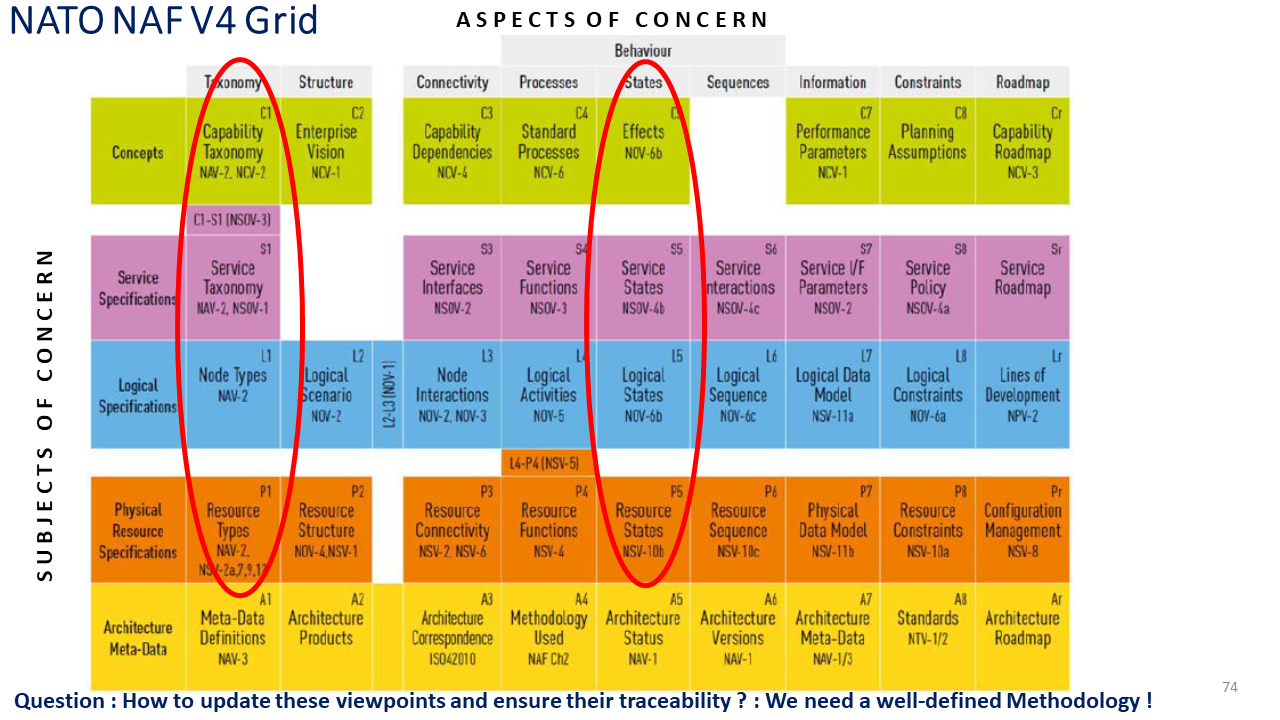
Notice that the 'Architecture Meta-Data' has been renamed to 'Architecture Foundation' and the S2- Service Structure Viewpoint has been added to the grid also some minor changes occurred in the 2020.07 document of NAF v4 Grid as indicated below.
Architecture Methodology to feed the NAF v4 Views
NAF v4 defines Methodological Stages similar to TOGAF's ADM phases ; however these 'Architecting Stages' do not focus on the order in which viewpoints should efficiently be used to ensure an 'architectural coherence' facing changes and saving time in populating the grid :
https://www.nato.int/nato_static_fl2014/assets/pdf/2021/1/pdf/NAFv4_2020.09.pdf
The figure below shows the Architecting Stages of the NAF V4 Methodology focusing on its central entity "Manage Architecture Motivation Data'.
The latter makes reference to the OMG's Business Motivation Model (BMM) standard to Manage the Architecture Motivation Data such as Vision, Goals, Influencers (Drivers), Policies and Rules, ... that set the context of 'process adaptation' to major architecture drivers such as interoperability.
Arrows indicated in blue on the left in the official document of NAF v4 provides you with high-level links among blocks of concepts. In reality, according to the BMM standard, for example Influencers (Drivers) impact first Goals then Strategies and Tactics, etc... cf. the OMG's BMM standard on https://www.omg.org/spec/BMM/1.3/PDF for details or directly figure 6 for a quick insight...

Figure 2 - The NATO NAF v4 - Architecting Stages around the Architecture Motivation Data Elements - While it has been inspired from TOGAF ADM Cycle, the 'Managing Architecture Motivation Data' Entity helps not only to set the context of 'process adaptation' to major architecture drivers - it does also help to adjust strategies and align underlying views until the physical layer on the basis of captured feedbacks (cf figure 6 for extensions).
Architecture Enabled Engineering : Aligning the NAF v4 Viewpoints to Desired Effects / Lessons learned
To provide decision makers with timely and accurate information using the elements of the architecture, NAF v4 uses the "information" - cf. in the grid to align different architecture viewpoints to Desired States/Effects.
Below you will find some shortcuts to avoid wastes in elaborating no-productive or potentially redundant views in such an alignment :
- First, focus on the Motivational Elements (Vision, goals, … until requirements) using the Aspects of Vision and Constraints (C2, C8) views as well as the Desired Service taxonomy (S1) and Service Constraints (S8) views that will provide you respectively with the needed capabilities and underlying services.
- Then to understand how your existing “Capabilities” and Services need to evolve, prepare a Taxonomy of Capabilities (C1) and Services (S1) views of your existing system (baseline architecture),
- Now, you are ready to precisely define the "Desired Effects" that your organization would like to realize through the “C5 – Effects” view and analyze impacts from Target Capabilities until the Resource Architecture (P1 to P8) views.
In particular, 'desired states' targeted by the C5 view will guide you to focusing directly into the behavioral aspects such as (S4) and (S6) (respectively Service Functions and Interactions) views that need to be clarified for a given "target state" to reach.
Therefore all other underlying Logical and Physical Resource views located within these two behavioral aspects will be aligned to the "S4" and "S6" service views to ensure coherence through the Conceptual, Logical and Physical Data (S7, L7 and P7) views.
Some complementary recommendations to ensure an Architectural Coherence
The figure below depicts the 'Motivational Alignment' of the NAF v4 grid views based on the Motivation Data Elements (cf. figure 2) that are summarized using ArchiMate langage notations (from Drivers, Assessments and Goals until Constraints) on the right.
Being fed by such a 'Motivational Data', two small arrows depicted on the left of the NAF v4 grid originated from "Desired States/Effects " 'indicate all Aspects' of Capabilities, Services and underlying Logical and Physical Resource views that need to be aligned with these target "States or Effects" to reach.
Such a 'Strategic alignment' aims to ensure not only the coherence of the Architecture Building Blocks vertically ; but it does also contribute to populate the grid through appropriate views being aligned to these desired states (Horizontal Coherence) through subjects of concern...

Figure 3 - Correspondances between NAF V4 Grid and ArchiMate Layers aligned with the Motivation Aspect depicted on the right
Tips to proceed with the Strategic Alignment
Tip 1 : The alignment of the subjects of concerns (horizontal layers) of the grid with 'Desired Effects' that your organization would like to realize aims to provide decision makers with accurate information collected through these layers and serve in realizing a dynamic "gap analysis" between existing and target desired states.
Therefore, it does not only assist you initially in preparing the roadmap of incremental capabilities using the capability roadmap (Cr) view but also helps in adjusting them through 'state based data' that need to be collected from layers (see the Data-Driven and Goal Based Alignment using the NAF v4 depicted in figure 6).
Tip 2 : The gap analysis helps to fragment capabilities into 2nd or 3rd level granularities to ensure traceability using the C1-S1 (Capability to Service Mapping ) view to match the reality of "units of works" of services that need to be provided to consumers (cf. example depicted in figure 5 below).
Tip 3 : In addition, expressing both capabilities and services being based on objects in 'Desired States' and aligning physical functions based on logical activities through the (L4-P4) bridge viewpoint helps to ensure alignment of physical resources to evolution of strategies due to changes on monitored drivers.
An excerpt from some of these views referenced within NAF v4 Grid are provided below from the Strategic (Concept) Viewpoint to the Resources Viewpoint with an alignment being based on the Architecture Motivation Data (outlined in Figure 2 above).
Such an alignment allows you to express elements of the architecture in coherence according to 'Desired States' you want to reach for your Organization and System Architectures.
Figure 4 - Orchestration of the NATO NAF v4 Viewpoints from Strategies till Resources based on the Architecture Motivation Data (Drivers, Assessments, Goals, Outcomes, Values... at the center)
From Desired Effects to Physical Resources
The figure below depicts on a simplified example alignment of architecture elements until description of Data-Types based on the Value Items to deliver (dashed circles in red give their correspondence in the the NAF v4 Grid of Viewpoints).
Attributes of Value aligned Data-Types depicted on the bottom corner of the figure indicate the "data" to collect for Measure of Performances (MoPs).
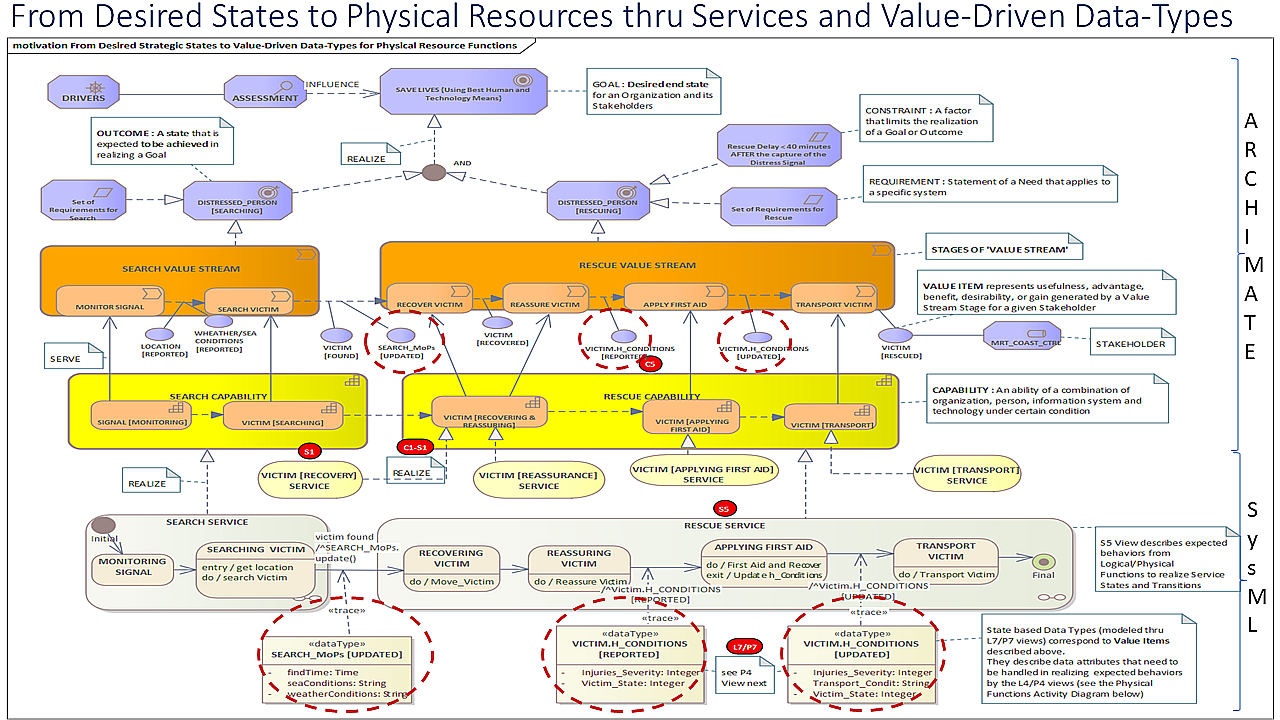
Figure 5 - 'Desired Effect-Based Alignment' from Goals, Outcomes, Value Streams and Capabilities to Services and Value-Driven Data-Types - circles in red indicate the corresponding cell in the NAF Grid of Viewpoints
To ensure interoperability of services being aligned with sub-capabilities, a state transition diagram (using the S5 view) is elaborated for the 'Search' and 'Rescue' services as shown on the bottom part of the figure 5.
Summary
The figure below outlines a summary of the Steps to align horizontally and vertically Aspects of Concerns of the NAF V4 Grid to 'Desired States' being based on the BMM's 'Motivation Data' (Goals, Strategies, Policies, Rules - cf. Steps 1, 2 and 3 below).
The Step 4 highlights data feed-backs collected from the Physical layer that are assessed by Step 5 to adjust strategies before initiating a new alignment cycle of the Architecture Views of the Grid (through a new sequence of Steps 1, 2 and 3).
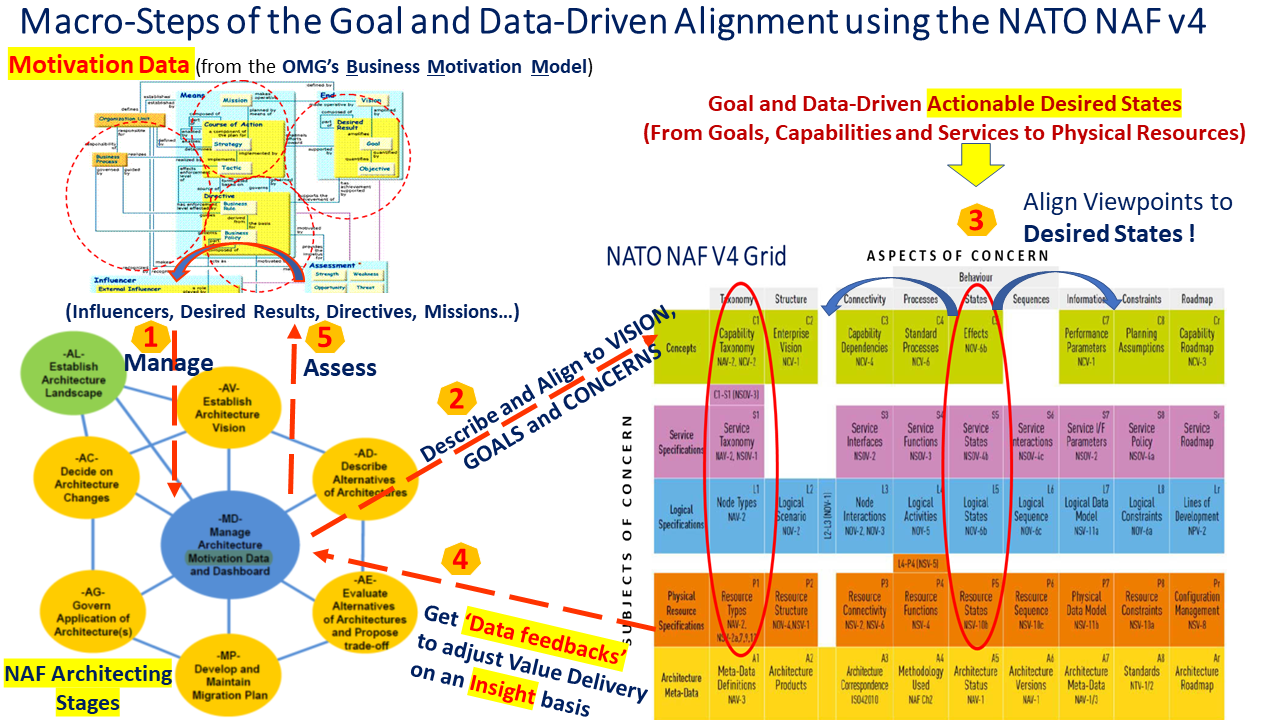
Figure 6 - The Data-Driven Strategic Alignment using the NATO NAF v4 Architecting Stages and its Grid of Architecture Viewpoints
Complementary information about the NATO NAF v4 and the end-to-end alignment including "architecture enabled decision-making" is provided in the following trainings :
https://www.goobiz.com/NATO-Architecture-Framework-NAFv4.html ( 3 days training).
Putting into practice the NAF v4 on an end-to-end case study : the 4 day version of the "NATO NAF v4" Training using ArchiMate on Sparx EA.
--
Last updated, May 18th, 2024 - Birol Berkem, Ph.D Informatics
